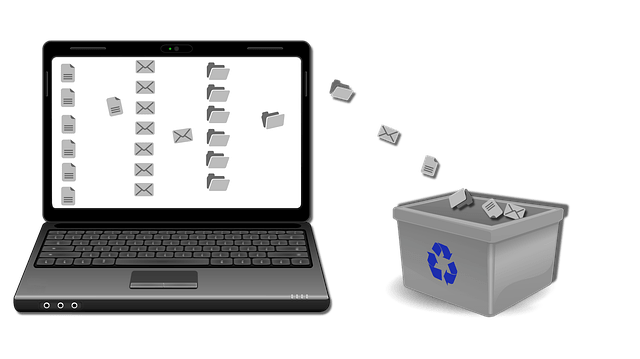How to Increase Your Computer’s Speed & Performance
In this post, we will explain the measures for Microsoft Windows users that can help speed up the computer or at least determine how to Fast the slow computer.
Table of Contents
What steps can I take to fix my computer running slow?
Remove unnecessary Startup Program
One of the most common causes of slow computers is programs running in the background. Remove or disable any TSRs and startup programs that automatically start computer boots each time.
To see what programs are running in the background and how much memory and CPU they are using, open Task Manager. If you are running Windows 7 or above, run RaceMon to get a better idea of how your computer resources are being used.
If you have an antivirus scanner, spyware protection program, or another security utility on the computer, make sure that it is not scanning your computer in the background. If the scan continues, it will reduce the overall performance of your computer. If this is the case, allow the scan to complete, and computer performance should improve.
Removing Temp File
Temporary files accumulate on the hard drive as soon as the computer runs the program. Deleting these temporary files can help improve computer performance.
First, we suggest using the Windows Disk Cleanup utility to remove temporary disks and other files that are no longer required on the computer.
Unfortunately, Disk Cleanup cannot delete every file in the temporary directory. Therefore, we also suggest deleting the temporary files manually. To do this, open the Start menu and type %temp% in the search field. In Windows XP and earlier, click the Run option in the Start menu and enter %temp% in the Run field. Press Enter and a Temp folder should open. You can delete all files found in this folder and, if any files are in use and cannot be deleted, they can be discarded.
Free hard drive space
Always keep in mind that at least 200-500 MB of the hard drive has free space. This available space allows the computer to increase the size of the swap file, as well as space for temporary files.
Run the equivalent of ScanDisk, ChocDask, or something to verify that there is nothing physically wrong with the computer’s hard drive.
Run Defrag to help ensure that the data is organized in the best possible order.
Use other software tools to test the hard drive for any errors by looking at the drive’s smart.
Scan for viruses
If your computer is infected with one or more viruses, it may run more slowly. If your computer does not have an antivirus program installed, you can run Trend Micro’s free HorseCall online utility to scan viruses on your computer, as well as remove them. It is also recommended that you install an antivirus program for active protection from viruses.
Scan for malware
Today, spyware and other malware is a major cause of many computer problems, including slow performance. Even if an antivirus scanner is installed on the computer, we recommend running a malware scan. Use the free version of Malwarebytes to scan your computer for malware.
Update windows
Make sure you have all the latest Windows updates installed.
If you are on the Internet when your computer is slow, make sure that all browser plug-ins are up-to-date.
Update your drivers
Make sure you have the latest drivers for your computer hardware, especially the latest video drivers. Having an out-of-date driver can lead to a classification of issues including slow performance.
Reboot computer
After making any of the above changes, be sure to reboot your machine.
Run a registry cleaner
We generally do not recommend registry cleaners. However, if you have followed all the above steps and your computer is still slow, try running a registry cleaner on the computer.
Memory upgrade
If you have had your computer for more than two years, you may need more memory. Today, we suggest that the computer has a minimum of 2 GB of memory (RAM) for 32-bit systems and 4 GB for 64-bit systems. By having enough memory for programs running within memory, your computer will not need to swap information stored in memory into a swap file. If the hard drive light is continuously active, this may be an indication that the computer is frequently swapping information between your memory and the hard drive.
Upgrade hard drive
One of the biggest obstacles of a computer is a hard disk drive. Upgrading from a standard hard drive to a solid-state drive (SSD) will significantly improve computer performance.
Check to overheat on computer or processor
Make sure your computer and processor are not overheating. Excessive heat can cause a decrease in computer performance because most operating systems automatically reduce processor speeds to help compensate for heat-related issues.
Dust, dirt, and hair can also disrupt the proper airflow inside your computer, causing the computer to overheat. Make sure that your computer case is clean, and that fans are not obstructed.
Increase or upgrade processor speed
Increasing processor, or CPU speed, can help improve your computer’s performance. There are two options to increase processor speed: overclocking or upgrade.
Overclocking a processor means increasing its speed to the speed it is designed to run stickily. Overclocking can increase processor speed, but the increase is often not very significant, resulting in a maximum increase at speeds of perhaps 10% or 20%.
In addition, the processor itself must be able to overclock. You will need to find the specifications for the processor in your computer to determine if it can be overclocked. An overclocked processor will generate more heat, thus requiring more powerful heat sinks and fans to draw excess heat from the processor.
A safe alternative to overclocking is upgrading the processor in your computer. You will need to get specifications for your motherboard to determine what type of new processor can be used in it. You can then install the new processor in place of the existing processor.
Delete all computer data
If none of the above solutions solve your issues, another option is to reinstall Windows or erase everything and start again.
Erasing everything on your computer and reinstalling the operating system can increase performance by getting rid of old software or drivers. Installing a fresh copy of Windows, software programs, and the latest drivers help verify that there are no software-related problems, which can slow down your computer.
Hardware issues
Finally, if your computer is slow even after trying all the above measures, there may be a serious hardware issue, such as a corrupted device in the computer. Examples of hardware failures may include hard drives, CPUs, RAM, motherboards, or other components.
You can run a hardware diagnostic test using the Ultimate Boot CD (UBCD) utility. This utility provides information about whether your computer has any piece of hardware.
Replace old computer with new computer
If your computer is more than five years old, it will have slower performance than the new one. As more advanced software programs are released, they are optimized to run more efficiently on new computers. Older computers are not able to run these new programs, due to which they can perform more slowly.
In addition, new software normally demands more, which is another problem for older hardware. We recommend that you consider buying a new computer or upgrading your current one.
We hope you liked this article related to how to make your computer faster.
















